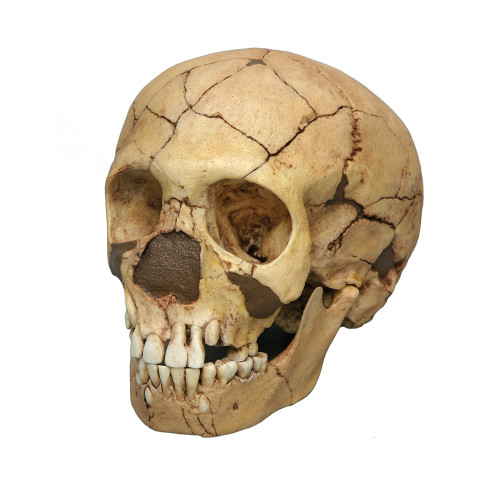Neanderthal child skull (70,000 years).
The Homo neanderthalensis child skull Teshik-Tash was discovered by A. Okladnikov in Uzbekistan in 1938.
This skull helped establish the easternmost range of Neanderthals.
It has been suggested that this skeleton was buried in a ritual fashion.
With an estimated age of 9 years, this young boy had matured enough physically to exhibit distinctive Neanderthal characteristics, such as a large face and nasal area, a long, low cranium, a mandible without a chin, and a maturing brow ridge.
The original cranium was reconstructed from approximately 150 fragments.
Notes:
- A stand is available by enquiry, sold separately.








